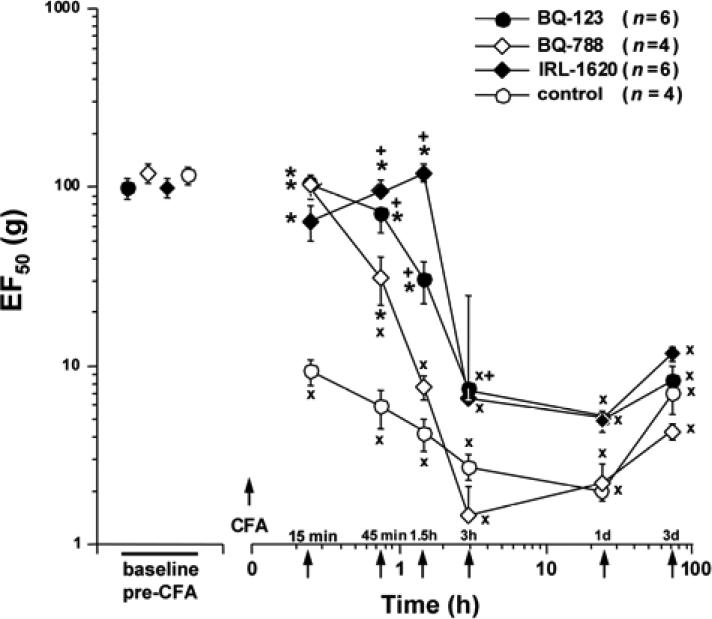Fig. (5).
Effects of the selective ET-receptor antagonists and ETB agonist on tactile hyperesthesia. EF50s, defined as the von Frey filament force (g) that produces withdrawal response half the time, were determined from interpolation of stimulus-response functions and used as a measure of mechanical sensitivity. Local pre-treatment (10 min prior to CFA and at the time of CFA injection) of rats with BQ-123 (total dose 65.6 nmol/paw), or BQ-788 (total dose 60 nmol/paw) delayed the fall of EF50 in the inflamed paw, when compared to CFA + vehicle treated rats. Pre-treatment with the ETB agonist IRL-1620 (total dose 11 nmol/paw) prevented mechano-allodynia for 1.5 h. From 3 h onward there was no difference in EF50s between any of the ET-receptor agent-treated rats and those receiving CFA alone. (*P < 0.05 indicates significant differences from controls (CFA injection 10 min after vehicle injection). xP < 0.001 for CFA + vehicle or CFA + antagonist/agonist vs. the baseline, pre-CFA, values. +P < 0.05 for BQ-123 + CFA or IRL-1620 + CFA vs. BQ-788 + CFA).

